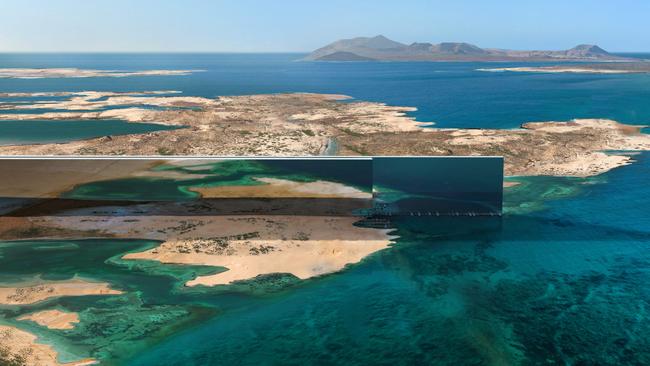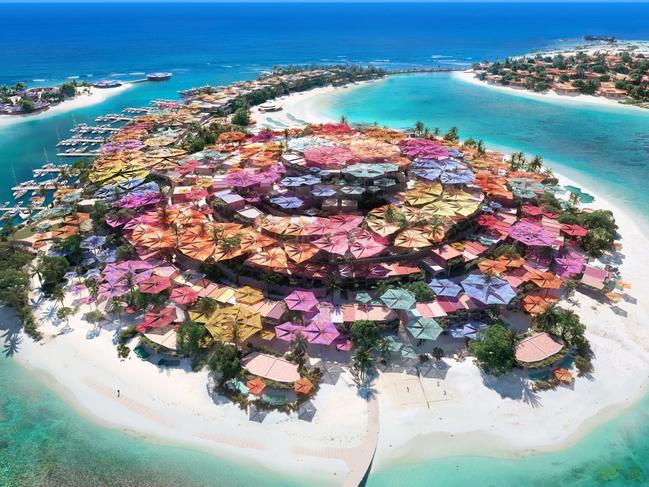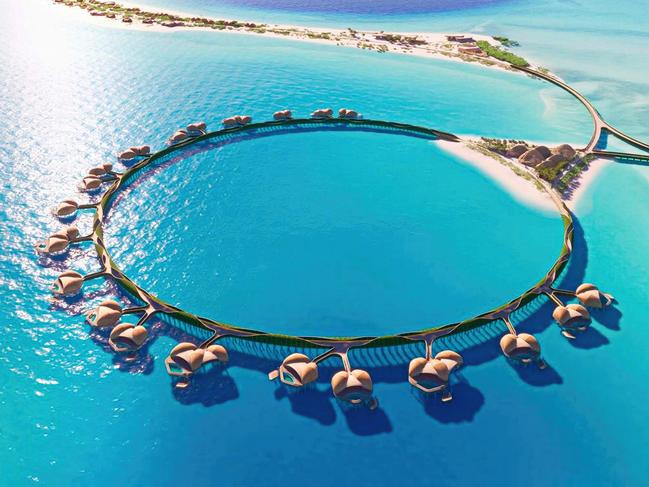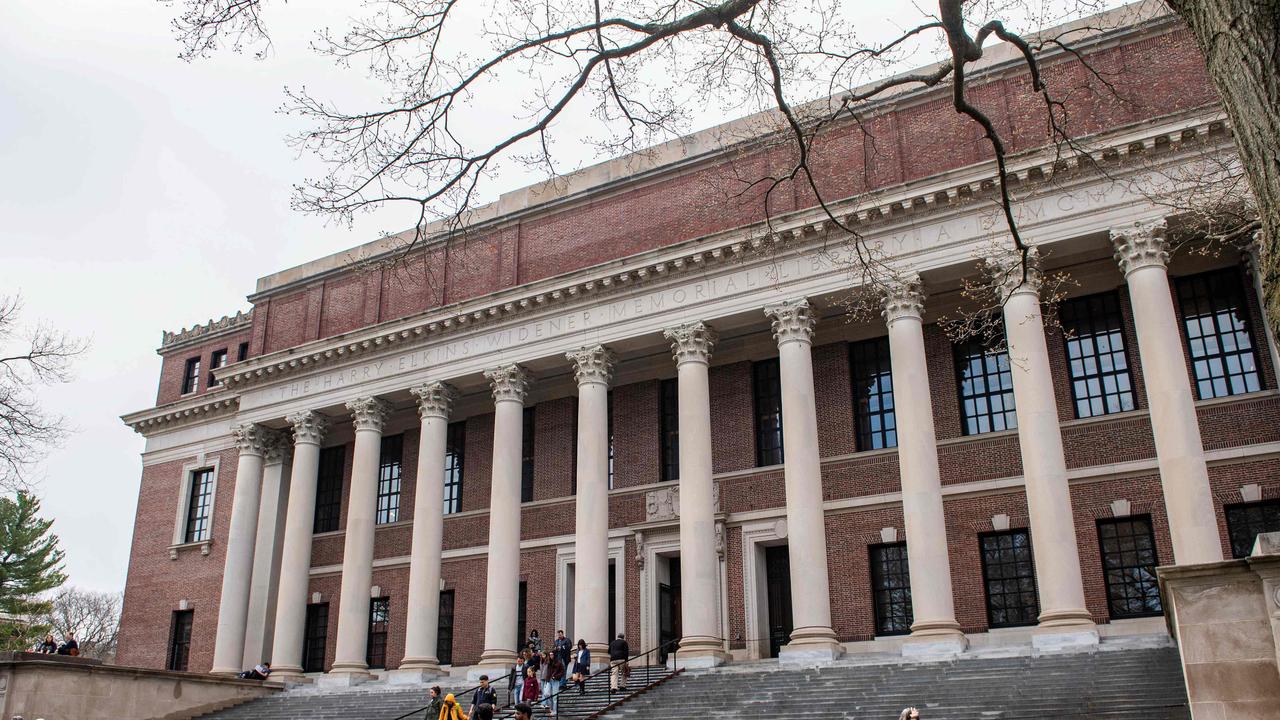Saudi Arabia: where architects go to test their wackiest ideas
A dolphin-shaped island. An oil rig revamped for bungee jumping. Architects bring ‘bonkers’ concepts to Saudi Arabia.

An airport designed to resemble a desert mirage. An island shaped like a dolphin, with coral-reef buildings. An offshore oil platform revamped into an amusement park, with a roller coaster and bungee jumping.
For architects, Saudi Arabia has become Shangri-La, a place to test their wildest and wackiest ideas.
How out-of-the-box are they thinking? “Some of the weirdest ideas we had for a long time and were not able to express creatively,” said Ahmed Al Ali, chairman of Dubai-based X Architects. “Now, we have a platform.”
His firm designed a resort to be built into the sand dunes of the nation’s Empty Quarter, where the hotel rooms will resemble desert flowers. Saudi Arabia, he said, “is a designer’s dream”.
Crown Prince Mohammed bin Salman, Saudi Arabia’s de facto ruler, is egging on the flights of design fancy. He wants to make the once-closed-off kingdom one of the world’s most visited countries, and to achieve that goal is spending roughly $US1 trillion ($1.6 trillion) on resorts, a cruise industry and an airline.
The message to architects, said Gerard Evenden, senior executive partner at UK-based Fosters + Partners: Get “people to notice”.
Other proposed projects include an 46sq km industrial city shaped like a octagon and half-floating in the Red Sea; a hotel shaped like a ring in water, with rooms on stilts; and the world’s biggest urban park, four times the size of New York’s Central Park and built atop a decommissioned air base.

The most audacious of them all – a skyscraper that would stretch for 120km, dubbed the Line.
“It is the most bonkers idea that anyone has ever come up with,” said Aidan Walker, a UK-based architectural critic and curator of design conferences. “How could anyone think that this would be a way to live?”
How many such plans become reality is anyone’s guess, though work has begun on some. Most of the proposals were dreamt up when oil prices were lower than they are today. The oil windfall Saudi Arabia is enjoying now is expected to turbocharge the prince’s plans.
Fosters + Partners took a Red Sea island that already was roughly the shape of a dolphin and made it more so. It sharpened the dolphin’s features with lagoons and waterways, then added buildings that look like coral.
The firm also designed two airports on the Red Sea. The plan for one calls for mirrored roofs, creating the optical illusion of a desert mirage. The other, under construction, has sand-dune-like terminal gates.
Saudi Arabia first became a draw for international architects during the oil boom of the 1970s, when designers took modern architectural ideas from the West and merged them with characteristics of the Arabian peninsula: sandstone, shading from the sun and small, square windows.
The style became known as Salmani architecture, after King Salman bin Abdulaziz, the kingdom’s current leader, who was governor of Riyadh for five decades and oversaw development of the capital.
Prince Mohammed is seeking to make his architectural mark on a grander scale than his father. He has praised neighbouring Dubai for the speed and the ambition of its development. In the 2000s, that emirate became the go-to market for architects with big ideas, eventually building the world’s tallest tower, at 823m, and a palm-shaped island of villas and apartments.

The Saudi royal’s plans are bolder. He is redeveloping Riyadh, seeking to make the dusty capital greener, with a central park, a Saudi version of Paris’s Champs d’Elysee and a Bel-Air-style district for elite households.
On the Persian Gulf, the kingdom plans to redevelop an oil rig with three hotels, a ferris wheel, waterslides, roller coasters and bungee jumping. On the Red Sea, there are plans for a series of tourism projects, including a lavish island resort that would sell alcohol in Saudi Arabia for the first time.
Urban planners said the prince gets passionately involved in design briefings, listening to architects’ ideas and deciding on details as small as hotel furniture and street lamps. In one powwow with designers, the prince handed out multivitamins because he’d had a cold and didn’t want anyone else to get sick, according to one person who was there.
Diriyah, the original home of the Al Saud royal family, is slated to become a luxury tourism destination. To maintain the authenticity of new buildings in the 17th-century mud-brick settlement, the prince ordered the production of 180 million bricks by hand, using the same materials and methods employed 300 years ago, according to Jerry Inzerillo, the American chief executive of the project. “He approves everything,” Mr Inzerillo said.
The Saudi government didn’t respond to a request for comment on the prince’s involvement with architecture.
Prince Mohammed’s tallest order is the Line: 487m-high towers, up to 120km long, with no cars and powered by renewable energy. The development would be one element of a futuristic city-state, called Neom, that the prince hopes to build in the northwest.
With plans for nine million people eventually spread over 33sq km, the Line would be six times the density of Manila, the world’s most densely populated city. There are plenty of sceptics.
Benz Kotzen, an associate professor in the school of design at London’s University of Greenwich, said he was concerned about the potential environmental impact. But his biggest problem, he said: “To be absolutely honest, when I look at it, it’s pretty ugly.”
The Wall Street Journal



To join the conversation, please log in. Don't have an account? Register
Join the conversation, you are commenting as Logout